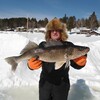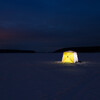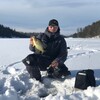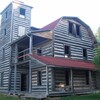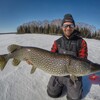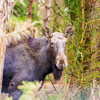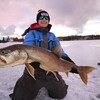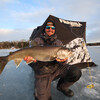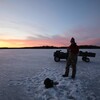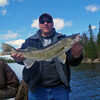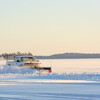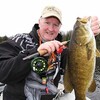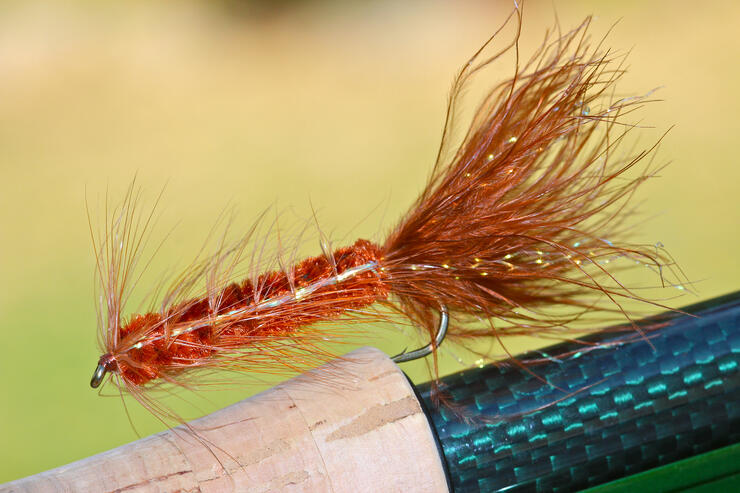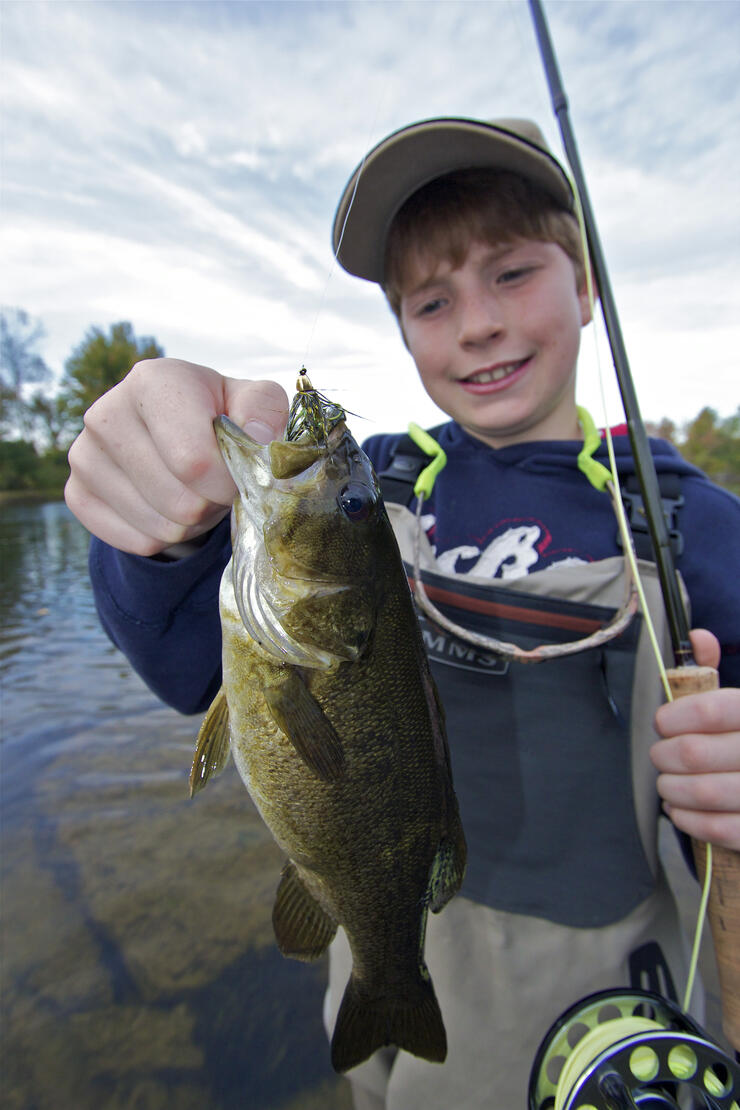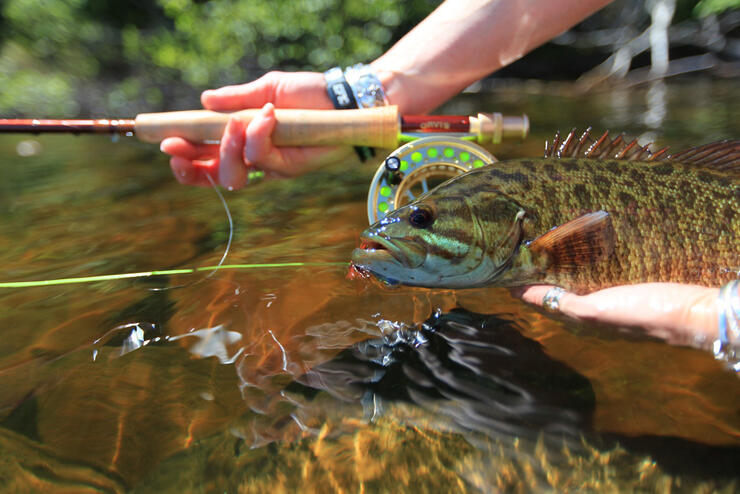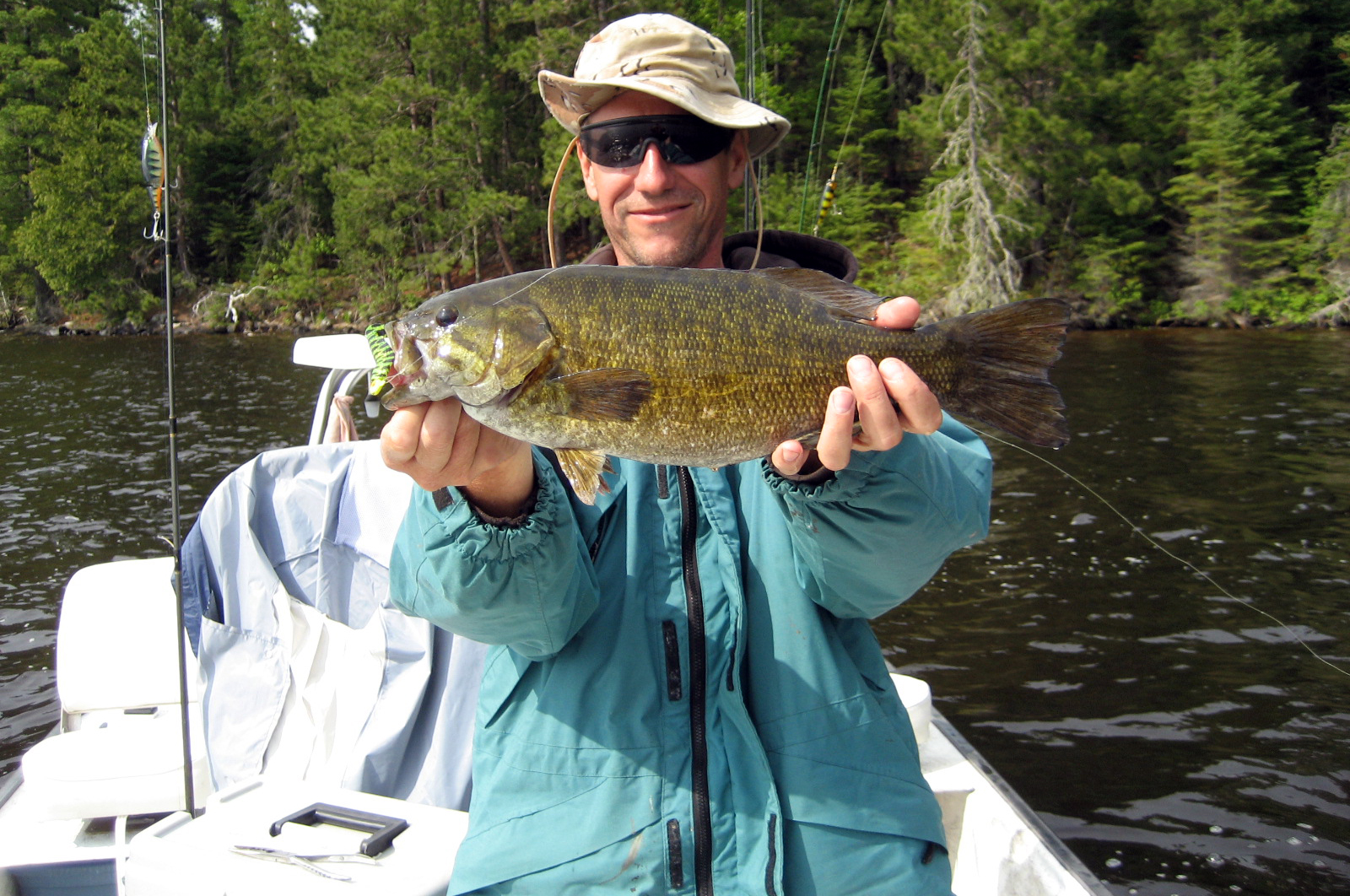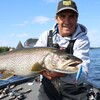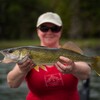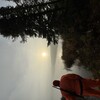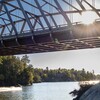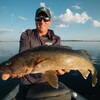Subsurface Smallmouth On A Fly

Sometimes the sun is too bright, the water too clear, or the atmospheric conditions are just not right to entice smallmouth bass into surface takes. As fly fishers, that is when we must be versatile and adapt our angling techniques to ensure success. Smallmouth love leeches, crayfish, hellgrammites, and minnows. All of these food sources are very abundant in Northwestern Ontario, which is why the smallmouth bass here are so large.
The one pattern that imitates all of these food sources is the infamous wooly bugger. Without question, a wooly bugger is my number one subsurface pattern to use for catching smallmouth. Black, brown, two-tone, bead-head, unweighted – they all work! Over the years I have developed certain methodologies that work well.
The first is to use a short sink-tip fly line with a short 4-5 foot leader to a white or black wooly bugger. I cast this setup onto ledges, boulders, fallen trees, etc... and then “twitch” the fly back. I find that white woolly bugger in sizes 4-8 to work very well.
Smallies will race out from behind the structure to grab what they think is either a struggling minnow or hapless leech. A fly line such as Orvis’s Streamer Stripper is perfect for this type of application in a 6 or 7 weight.
The next option I have is to use an intermediate fly line, usually a size six or seven weight, coupled to a 5-6 foot leader (10lb-12lb test). To that, I will attach a weighted wooly bugger. Beadhead or conehead wooly buggers are ideal, as I want to retrieve these flies in such a way that they “jig” underwater. To do this, I like to cast near some deeper structure, such as fallen logs or big boulders, and then let the fly line take the fly down.
Once deep enough (I use the countdown method to search different parts of the water column), I start to retrieve the fly using a short and fairly fast hand retrieve. This will make the fly “jig” and “pop” up and down as it comes back. It seems to drive bass and other fish crazy. You have to experiment a bit to find what retrieve speed works best.
When the bass are in a neutral mood, I find that I really need to slow my retrieve down in order to elicit a strike. Usually, you will feel a “bump” or weight on your line – immediately set the hook by giving your rod a jerk up or pull on the line. Often you are rewarded with a big bass somersaulting through the air!
The last technique I use is slowly retrieving right near the bottom a sculpin pattern. Often I find I can catch both big bass and sometimes a big walleye! With so many lakes and rivers in Northwestern Ontario that hold lots of trophy fish, you are usually rewarded when using these subsurface fly fishing techniques! These are some of the lodges I have fished for bass within Ontario.
Recommended Articles

Is the 1,400 Kilometre Drive to Northwest Ontario For a Fishing Trip Worth it?
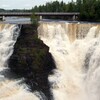
8 must-see waterfalls

6 Ways to Get Your 10,000 Steps This Fall

Top 5 Reasons You Should Be Fishing in Morson, Ontario

Discover The Winnipeg River

Enjoy Sunset Country's Fall Colours on Your Next Road Trip

Fishing in the Fall?

6 Reasons to Book a Fall Vacation to Sunset Country

10 Reasons to Avoid Ontario’s Sunset Country

Heading Across Canada?

A Guide to Sunset Country Museums
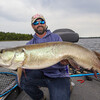
The Promised Land: Best Muskie Fishing in Ontario

Fall Fishing Tips
5 Essential Boreal Experiences in Ontario's Sunset Country

5 Obscure Facts About Northwestern Ontario: Were You Aware of These?

Great Food in Relatively Unknown Places
Outdoor Medicine

A Guide to Bringing Your Pets on Vacation to Canada

There's more than just fishing in the Red Lake Region

5 Amazing Sights You Can Only See By Boat

Going Fishing in Canada?

Going fishing in Ontario?

Outdoor Adventure in Ontario's Northern Paradise
Planning A Family Fishing Trip to Canada

Tips from a Fishing Legend



